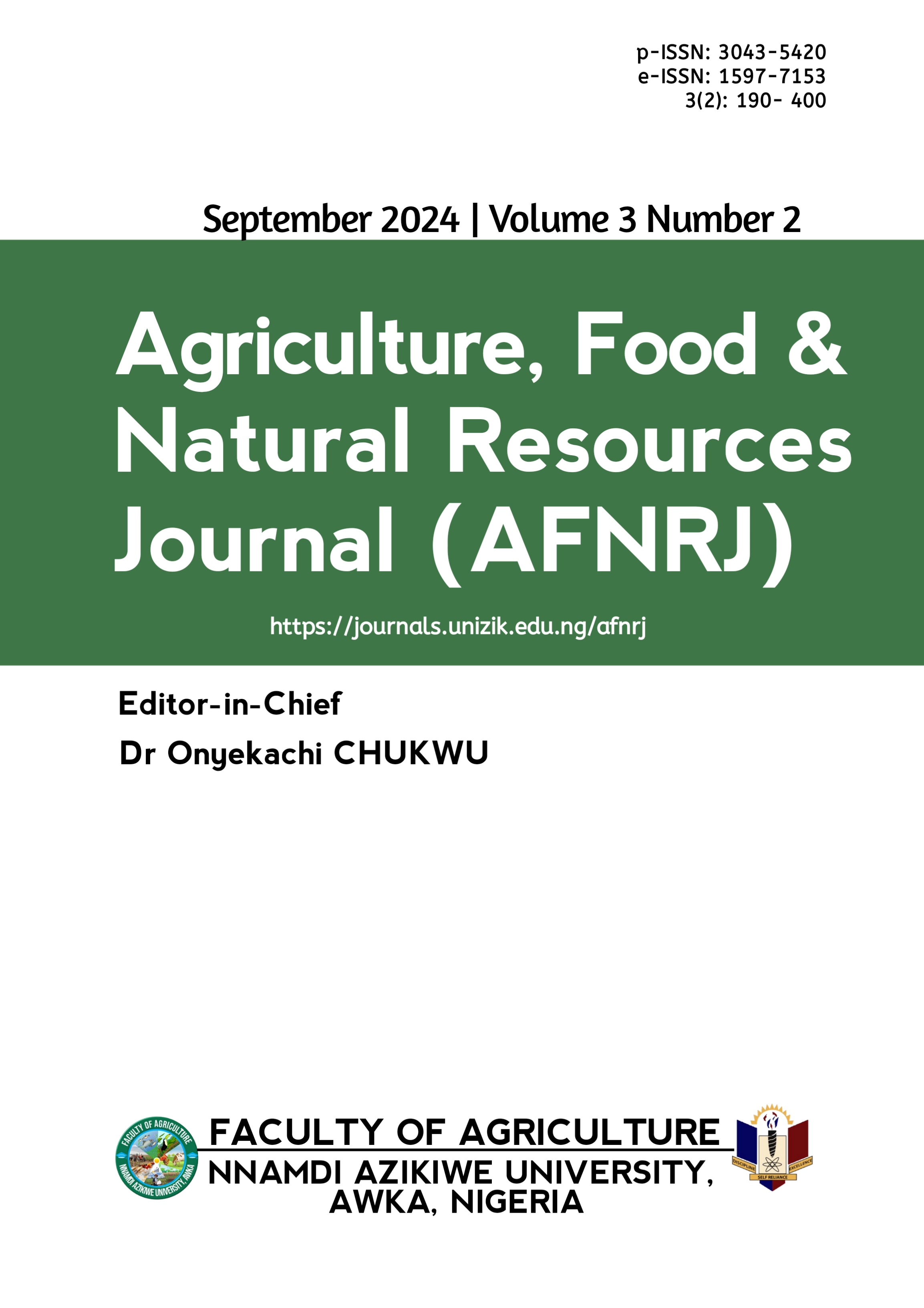Effect of urea and organic manure on growth and yield of Telfaria occidentalis in Abeokuta, Nigeria
DOI:
https://doi.org/10.5281/zenodo.14253999Keywords:
Crop, Organic, Productivity, Uptake, YieldAbstract
Fluted pumpkin (Telfairia occidentalis) is cultivated for its edible leaves and seeds, which are high in protein, fat, potassium, and iron, contributing to a balanced diet. The variability in the nutritional content of agricultural soil necessitates amendments to enhance soil quality and crop yields. This study compared the effects of urea fertilizer and organic manure (cow dung, poultry droppings) on the growth and yield of the leaves of fluted pumpkin under field conditions (singly and in combinations) at the botanical garden of the Federal College of Education, Abeokuta. The study employed a randomized block design with replicates and measurements of 10 g and 5 g amendments. Findings revealed that control plants exhibited the lowest growth parameters, indicating nutrient deficiency. Urea amendment showed the highest number of leaves (41.87), leaf breadth (10.43 cm), and stalk diameter (1.97 cm). The longest leaves (13.43 cm) and stalks (54.70 cm) occurred in plants grown in soil amended with a combination of 10 g cow dung and poultry droppings, while the highest branching (24.67) was observed in the urea and poultry droppings combination. The leaves had a dark-green colouration characteristic of healthy plants in the experimental plants. Applying 10 g of urea or a combination of nutrient sources can significantly enhance the plant's performance, suggesting both methods are beneficial for crop improvement. The study recommends that organic manure, especially when combined with urea, is vital for optimizing the growth of fluted pumpkins, thereby providing insights for sustainable agriculture.
Downloads
Published
Issue
Section
License
Copyright (c) 2024 Abosede Obafunke BELLO, Olagoke Ayobami OLANIYI

This work is licensed under a Creative Commons Attribution 4.0 International License.
which permits unrestricted use, distribution, and reproduction in any medium, provided the original author and source are credited.
Authors retain the copyright of their published work in the AFNRJ.





